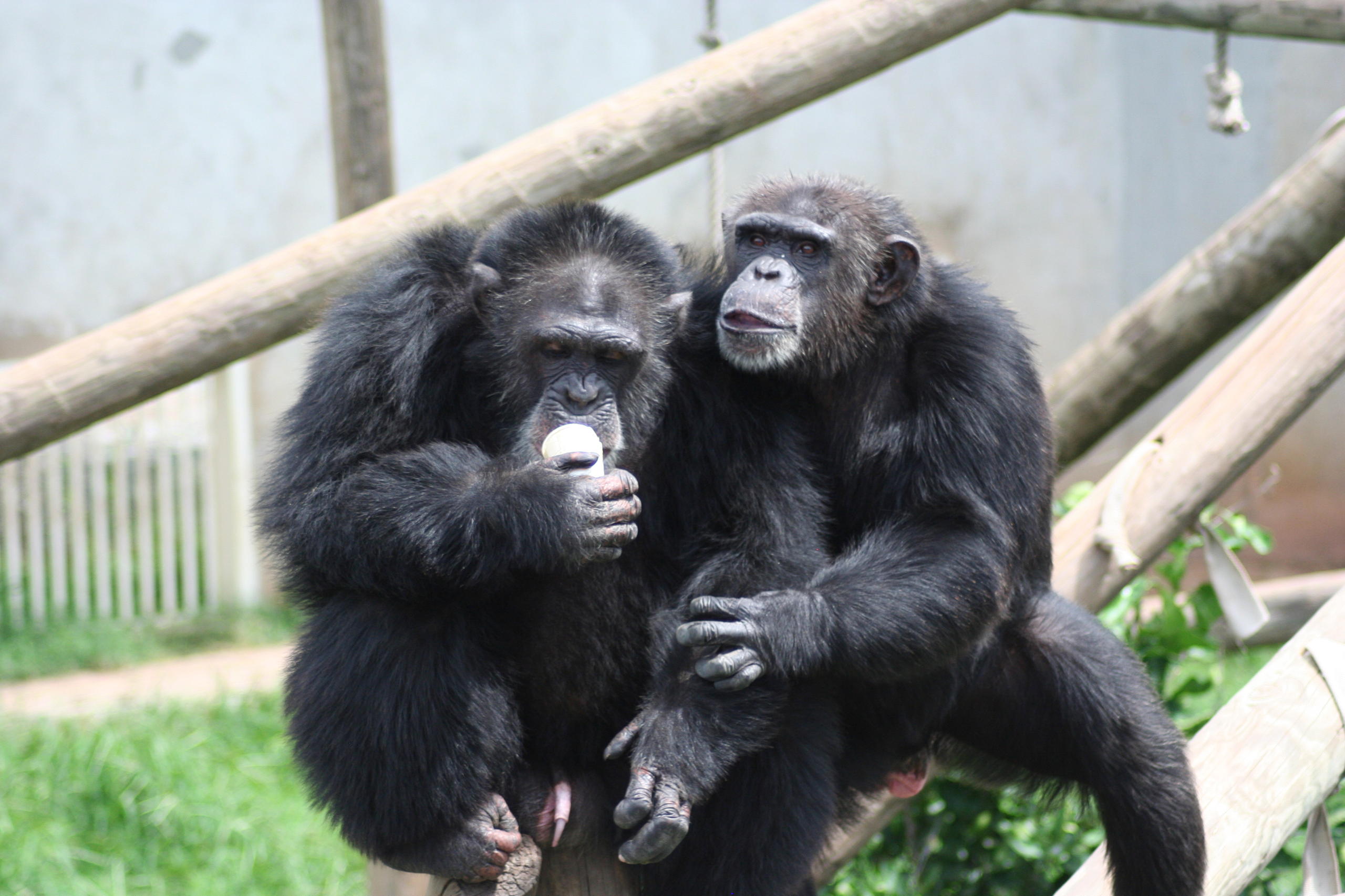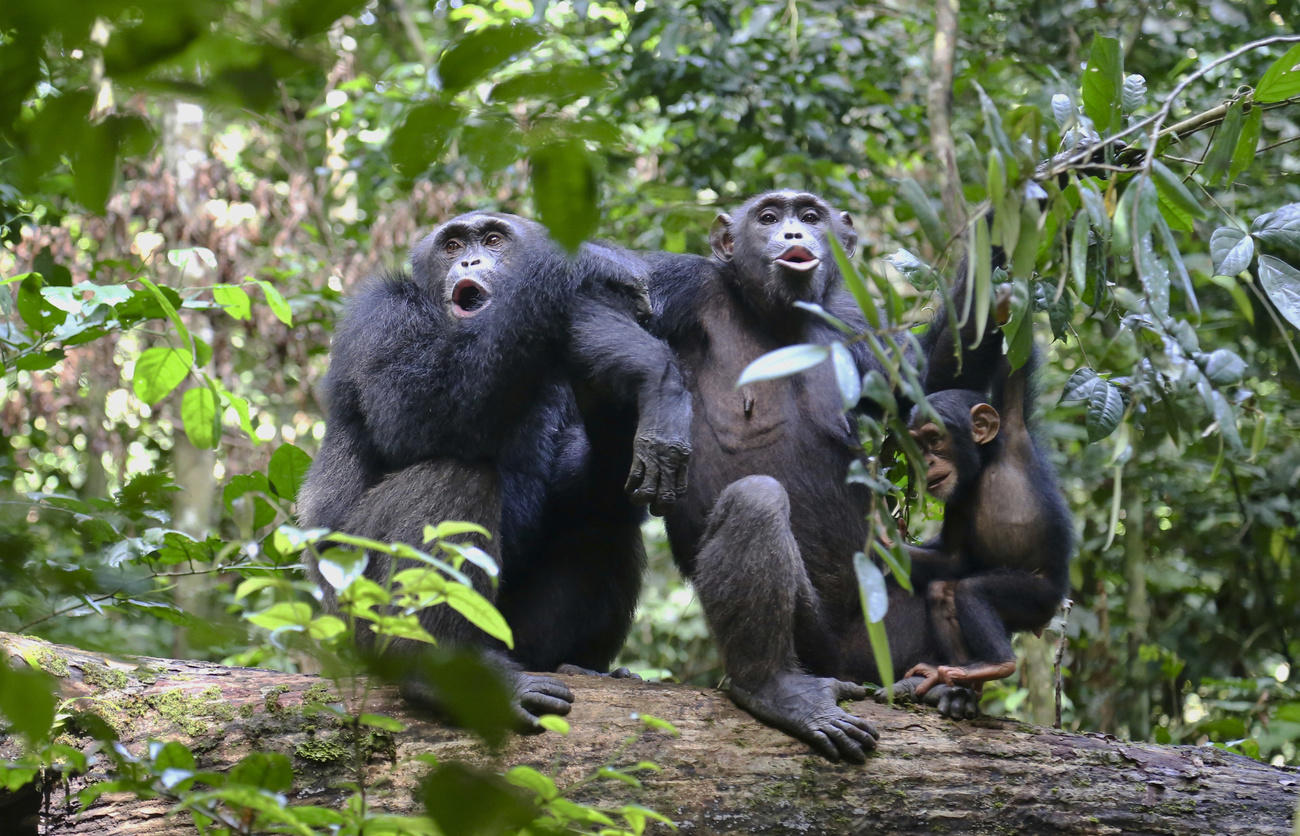Research: building blocks of language have existed for 40 million years

The capacity for language may date back 30-40 million years, to the last common ancestor of monkeys, apes and humans, a University of Zurich-led study has shown.
Researchers used a series of experiments based on an artificial grammar to show that monkeys and apes could, like humans, also identify rules in complex language-like constructions.
Language is one of the most powerful tools available to humankind, as it enables us to share information, culture, views and technology.
“Research into language evolution is thus crucial if we want to understand what it means to be human,” said Stuart Watson, postdoctoral researcher at the University of Zurich’s Department of Comparative Language Science, in a university statementExternal link. But not much research has been done into how language came about.
The international team around the university’s Simon Townsend has now shed some extra light on its evolutionary origins. The results have been published in journal Science AdvancesExternal link.
Connections between words
Being able to track relationships between words in a sentence, both next to each other (adjacent dependencies) and across a sentence (non-adjacent dependencies) is key to language processing.
For example, in the sentence “the dog who bit the cat ran away” we understand that is it the dog who ran away rather than the cat, thanks to being able to process the relationship between the first and last phrases.
In the study, this ability was examined in monkeys, apes and humans. Here, researchers took a novel approach: they invented an artificial grammar in which sequences were formed by combining different sounds rather than words. This enabled the researchers to compare the ability of three different species of primates to process non-adjacent dependencies, even though they did not share the same communication system.
The experiments were carried out with common marmosets (a monkey native to Brazil), chimpanzees and humans.
Common origin of language
“The results show that all three species share the ability to process non-adjacent dependencies,” said Townsend.
This meant that apes and monkeys were able to track relationships between sounds the same way as humans. “It is therefore likely that this ability is widespread among primates,” added the professor. “This suggests that this crucial element of language already existed in our most recent common ancestors with these species.”
Since marmosets branched off from humanity’s ancestors around 40 million years ago, this cognitive skill thus developed many million years before human language evolved, the statement concluded.

In compliance with the JTI standards
More: SWI swissinfo.ch certified by the Journalism Trust Initiative


You can find an overview of ongoing debates with our journalists here. Please join us!
If you want to start a conversation about a topic raised in this article or want to report factual errors, email us at english@swissinfo.ch.